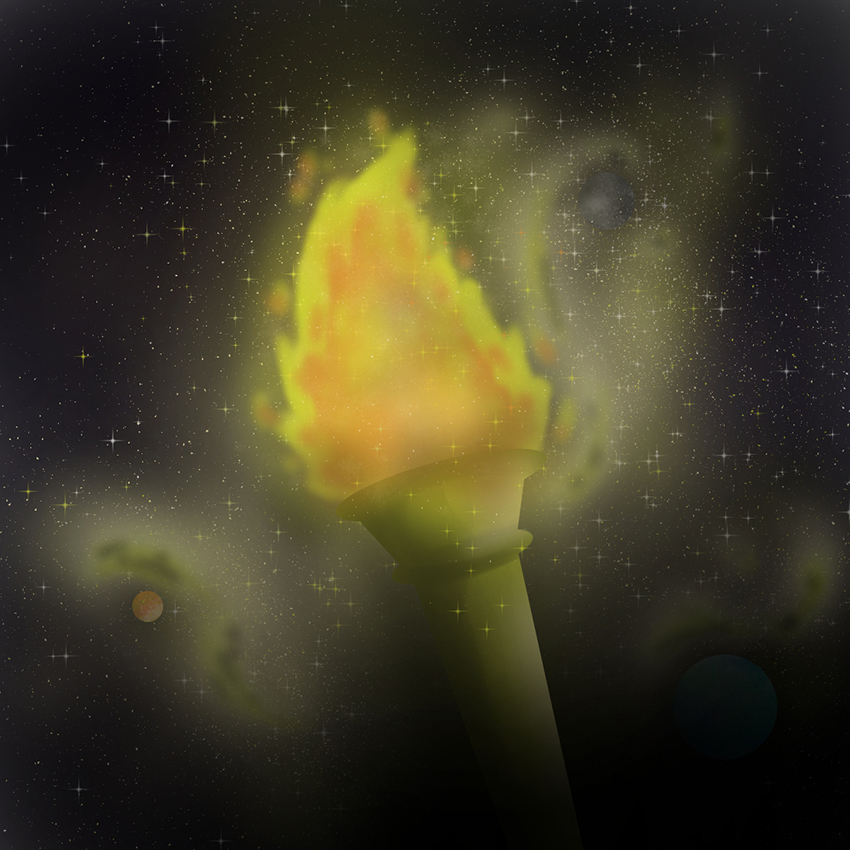UT researcher Paul Shapiro is painting the universe with numbers. His research focuses on how starlight from galaxies reignited the atoms in the universe following a period of time known as the “cosmic dark ages.”
Shapiro’s team is creating a massive simulation of the birth of the universe on the Titan supercomputer cluster housed at the Oak Ridge Leadership Computing Facility. The simulation spans over 300 million cubic light years on a grid made up of 4,096 cells on each axis — over 69 billion cells in total.
“There’s a whole epic called the ‘dark ages,’ which probably lasted between two or three hundred thousand years,” said Karl Gebhardt, a professor of astrophysics here at UT. “And then massive stars start to form.”
Scientists named this period the “cosmic dark ages” because of the way the atoms interacted with electrons during this time. Following the Big Bang, atoms in the universe went through three stages of interaction.
The first stage occurred directly after the Big Bang, during which the heat of the universe ionized all the atoms, separating the electrons from the atoms’ nuclei. Following this, the universe cooled, allowing the atoms to be de-ionized — recapturing the electrons.
Then, an unknown event occurred to re-ionize the atoms of the universe. Shapiro calls it the “Epic of re-ionization.”
“Something ionized the universe, something lifted the fog,” Shapiro said. “We call it cosmic re-ionization.” Though nothing is for certain, Shapiro and his team have a number of theories as to what could have caused the igniting of the universal torch. According to Shapiro, the key to the puzzle is starlight from the galaxies. “We think that the star light leaked out of the galaxies and that starlight, which was energetic enough, would’ve been able to re-ionize a hydrogen atom,” Shapiro said. “If enough starlight would’ve leaked out, the galaxies would’ve been surrounded by growing zones of ionized atoms.”
In order to accurately create the simulation, Titan had to account for every factor in the progression of the universe, including radiation, gravity and the mysterious substance known as dark matter, a key player in the formation of the universe.
“It tries to solve the problem of how the process unfolded when all of these components were traced with their evolution together,“ Shapiro said. “Everything had to be done simultaneously.”
No simulation can exactly replicate reality. Shapiro’s team model is not an exact replica of the universe as it currently exists, but rather a sister universe. The simulation is based off of statistical composition and has all aspects of the existing universe, simply in different places.
“We roll the dice randomly and see how often it comes out a certain way. Then we use that random rolls of dices to kind of paint on the universe, like a paint by numbers,” Shapiro said.
In August, Shapiro’s team was granted additional computing hours on Titan, which allowed them to create the simulation again, building upon any improvements to the previous experiment. In addition, Shapiro hopes to run a whole new simulation with a different grid system.
According to Shapiro, there are segments of the universe that condense where stars and galaxies form. Shapiro’s team wanted a clearer picture of this development.
“Matter is being spread out because of the expansion of the universe, but there are areas that begin to condense in,” Gebhart said.
Rather than creating a grid with a fixed 4,096 cells on each axis, Shapiro’s team will adapt the grid to have more cells within galaxies in the simulation.
This development would allow for a clearer picture of these galaxies as they grow larger. Furthermore, Shapiro and his team aims to compare these galaxies to the ones in our own cosmic neighborhood.
“We really wanted to make a prediction of what our own local volume of the universe around us today experienced when they went through this process,” Shapiro said. “There are relics of that process that we can study in much more detail nearby.”















